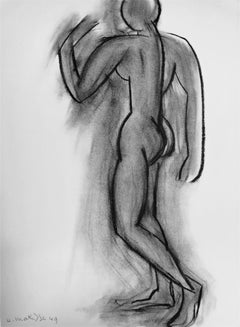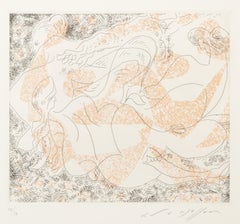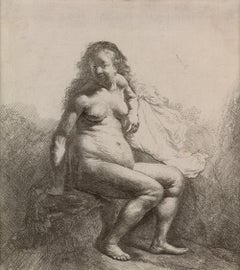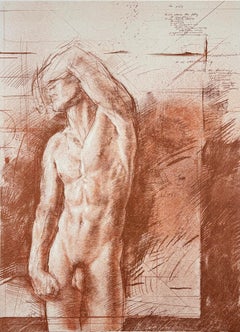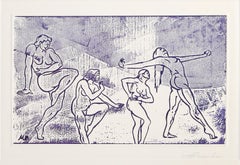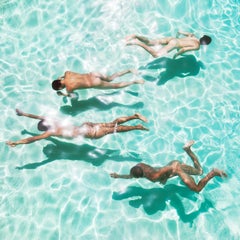Continental US - Nude Prints
1950s Modern Continental US - Nude Prints
Lithograph
1960s Surrealist Continental US - Nude Prints
Etching, Aquatint
17th Century Old Masters Continental US - Nude Prints
Etching
1980s Contemporary Continental US - Nude Prints
Lithograph
1970s Surrealist Continental US - Nude Prints
Etching, Aquatint
21st Century and Contemporary Contemporary Continental US - Nude Prints
Archival Paper
1970s Realist Continental US - Nude Prints
Lithograph
20th Century Continental US - Nude Prints
Etching
1980s Pop Art Continental US - Nude Prints
Offset
1980s Modern Continental US - Nude Prints
Lithograph
1970s Pop Art Continental US - Nude Prints
Lithograph, Offset
Early 2000s Contemporary Continental US - Nude Prints
Etching, Aquatint
1990s Pop Art Continental US - Nude Prints
Paper, Lithograph
1870s Old Masters Continental US - Nude Prints
Etching
1940s Art Deco Continental US - Nude Prints
Lithograph
1970s Surrealist Continental US - Nude Prints
Screen
21st Century and Contemporary Contemporary Continental US - Nude Prints
Etching
1950s Modern Continental US - Nude Prints
Lithograph
21st Century and Contemporary Modern Continental US - Nude Prints
Archival Ink, Rag Paper, Giclée
20th Century Continental US - Nude Prints
Etching
1980s Pop Art Continental US - Nude Prints
Lithograph
1960s Modern Continental US - Nude Prints
Lithograph
1970s Surrealist Continental US - Nude Prints
Engraving
2010s Contemporary Continental US - Nude Prints
Lithograph
21st Century and Contemporary Modern Continental US - Nude Prints
Archival Ink, Rag Paper, Giclée
2010s Feminist Continental US - Nude Prints
Paper, Ink, Etching, Watercolor
Early 1900s Impressionist Continental US - Nude Prints
Etching
2010s Pop Art Continental US - Nude Prints
Acrylic Polymer, C Print
1970s Realist Continental US - Nude Prints
Lithograph
1990s Contemporary Continental US - Nude Prints
Etching, Aquatint
21st Century and Contemporary Modern Continental US - Nude Prints
Rag Paper, Archival Ink, Giclée
1980s Modern Continental US - Nude Prints
Lithograph
2010s Photorealist Continental US - Nude Prints
Digital, Photographic Paper
1970s Surrealist Continental US - Nude Prints
Etching, Aquatint, Color
1960s Continental US - Nude Prints
Lithograph
1930s Surrealist Continental US - Nude Prints
Etching
1980s Contemporary Continental US - Nude Prints
Screen
20th Century Continental US - Nude Prints
Etching
1970s Pop Art Continental US - Nude Prints
Lithograph, Offset
1930s American Modern Continental US - Nude Prints
Woodcut
1970s Modern Continental US - Nude Prints
Etching
1990s Cubist Continental US - Nude Prints
Lithograph
1980s Pop Art Continental US - Nude Prints
Lithograph, Offset
21st Century and Contemporary Pop Art Continental US - Nude Prints
Lithograph
1950s Continental US - Nude Prints
Lithograph
1980s Pop Art Continental US - Nude Prints
Etching, Aquatint
21st Century and Contemporary Pop Art Continental US - Nude Prints
Lithograph
1990s Cubist Continental US - Nude Prints
Lithograph
1970s Surrealist Continental US - Nude Prints
Etching, Aquatint
Early 2000s Pop Art Continental US - Nude Prints
Lithograph
1990s Pop Art Continental US - Nude Prints
Lithograph, Offset
1930s Modern Continental US - Nude Prints
Lithograph, Stencil
1920s Post-Impressionist Continental US - Nude Prints
Lithograph
1910s Expressionist Continental US - Nude Prints
Engraving, Woodcut
Early 2000s Pop Art Continental US - Nude Prints
Lithograph
1970s Surrealist Continental US - Nude Prints
Lithograph
1970s Surrealist Continental US - Nude Prints
Etching, Aquatint
Late 20th Century Cubist Continental US - Nude Prints
Lithograph
1960s Abstract Continental US - Nude Prints
Color, Lithograph
1940s Surrealist Continental US - Nude Prints
Etching, Aquatint
